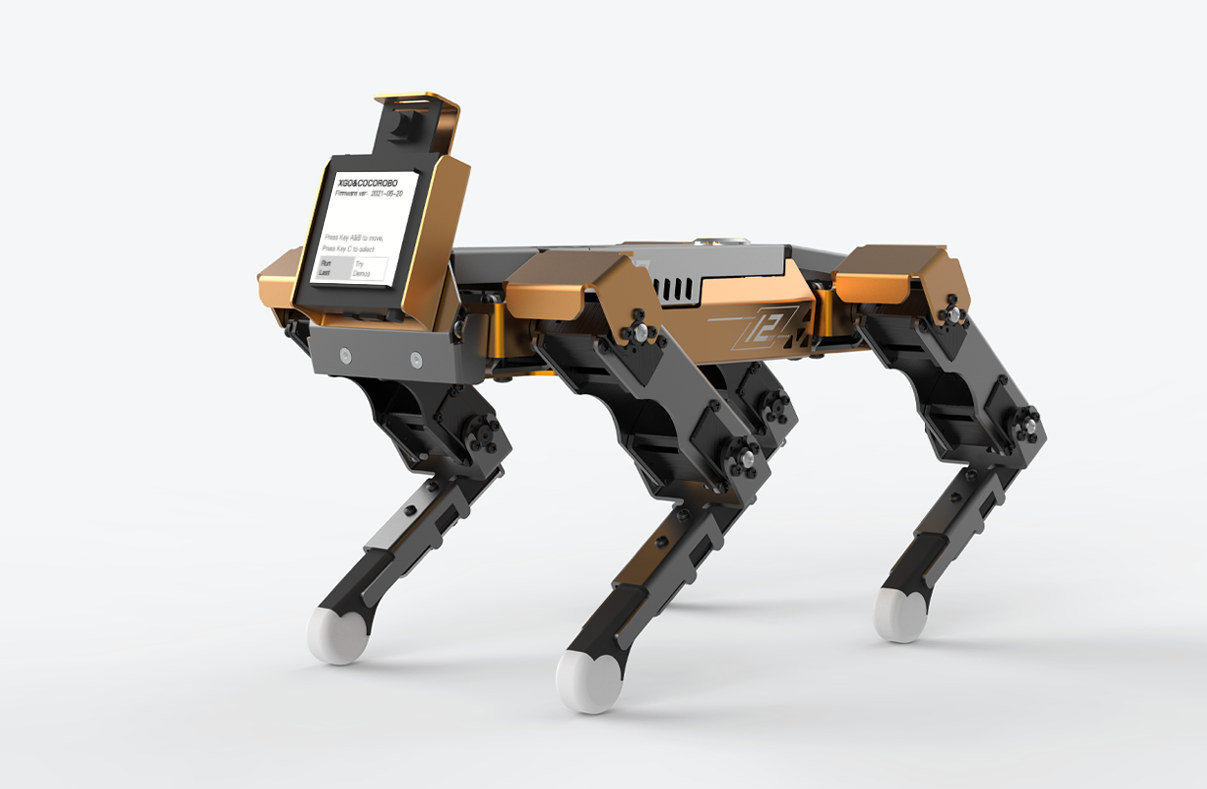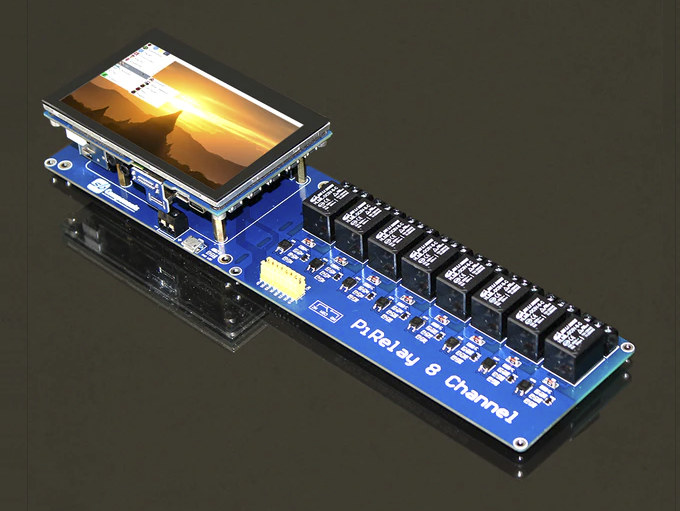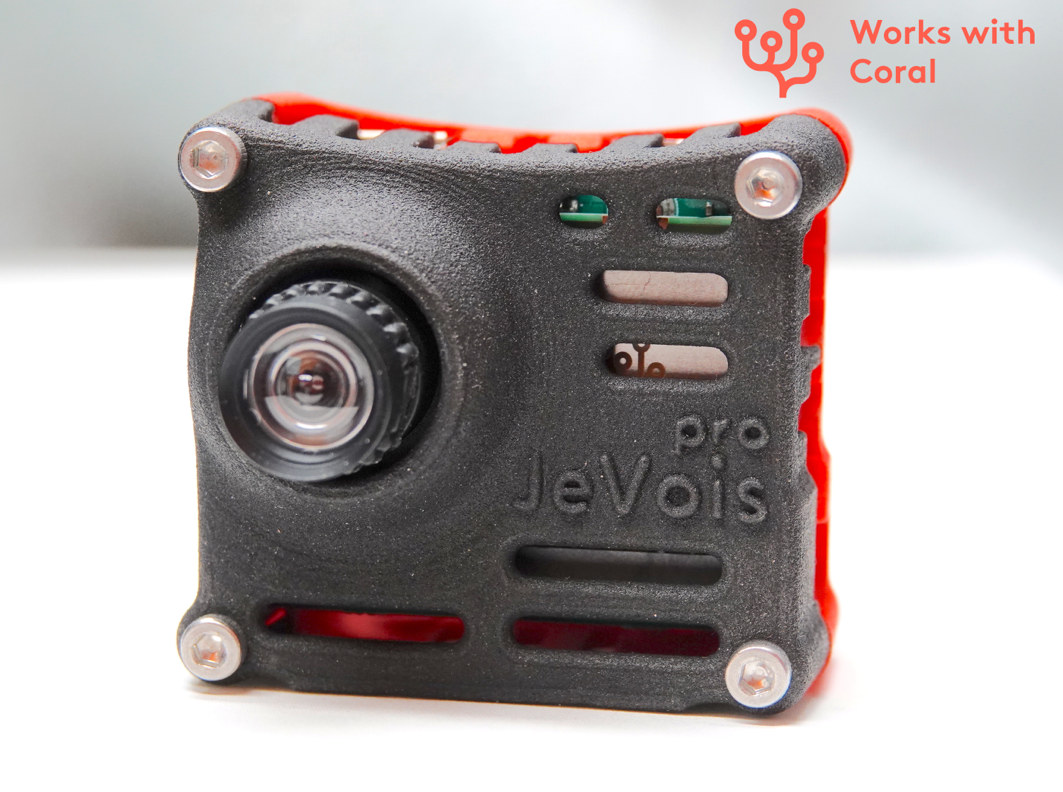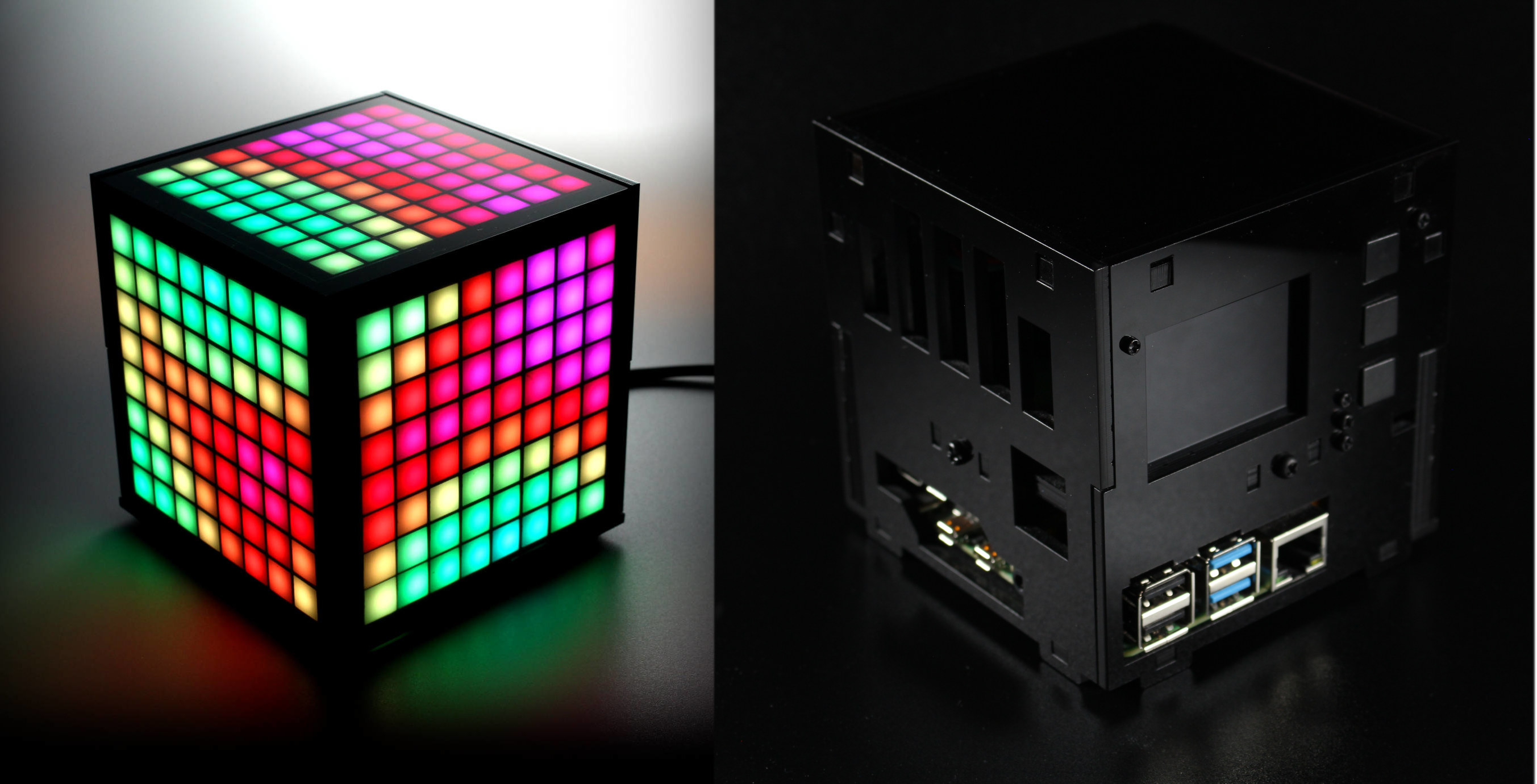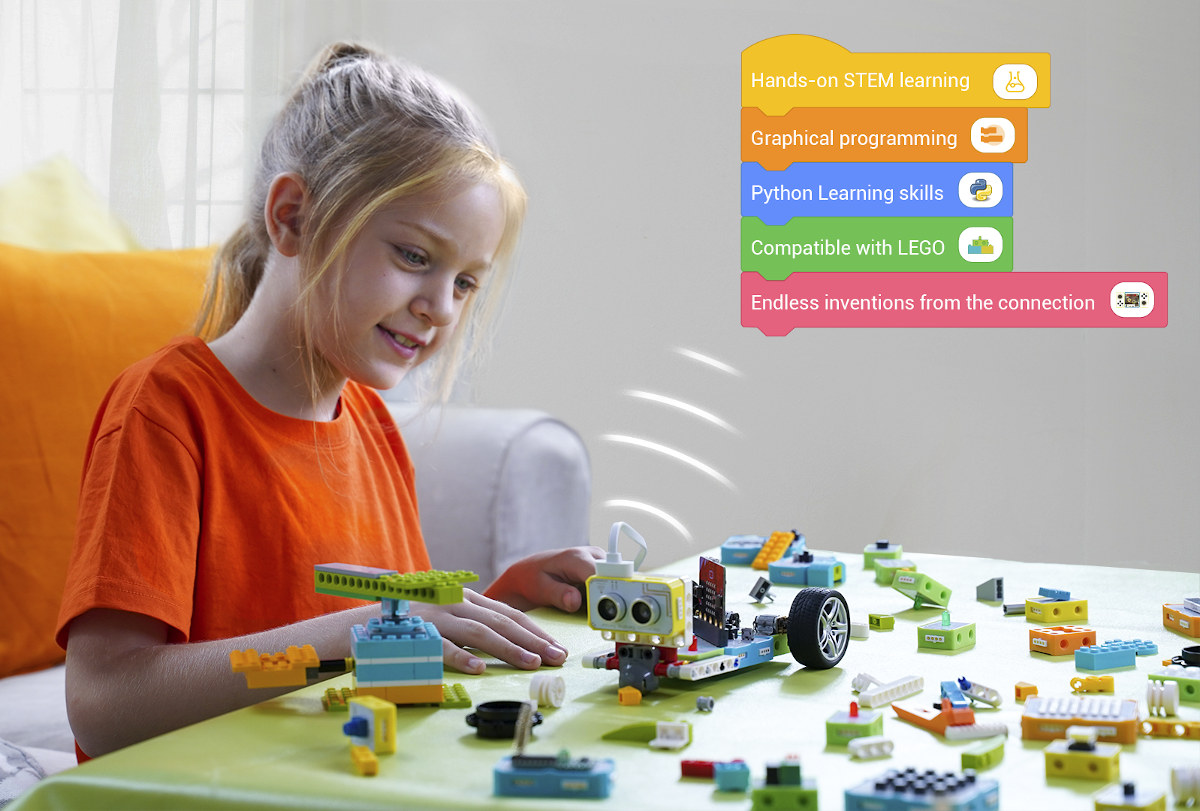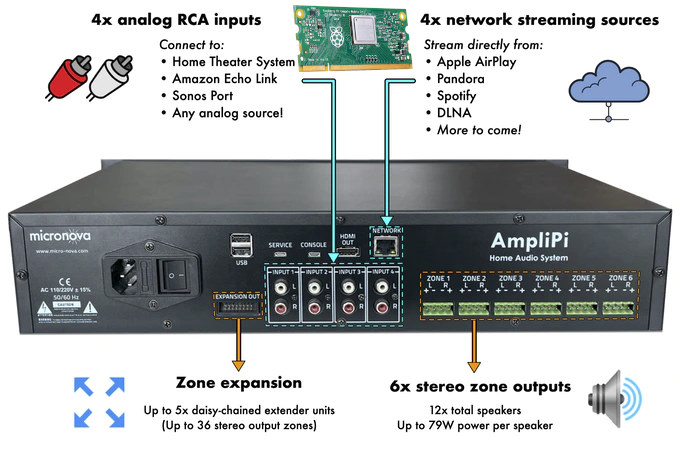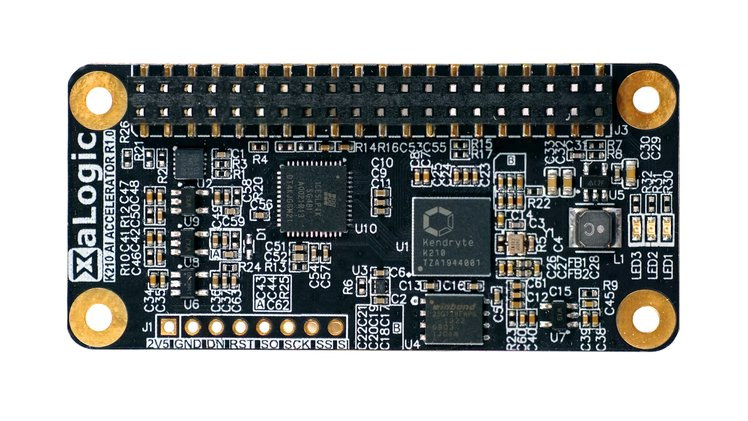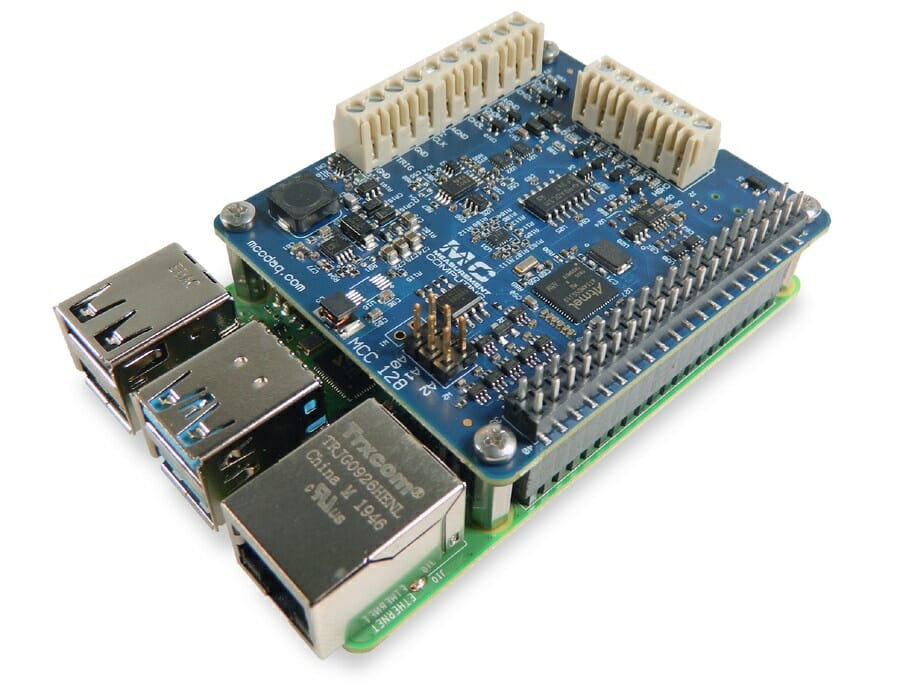[Update: Initially published on July 30th, XGO Mini Pro robot dog is now up on Kickstarter. While it was listed on the Kendryte K510 product page, it is only offered with the earlier Kendryte K210 in the crowdfunding campaign] Kendryte K510 RISC-V AI processor is the successor of Kendryte K210 with much more AI processing power (2.5/3 TOPS) that makes it suitable for robotics projects demanding much lower latency and quasi-real-time inference. One of the first products to be compatible with both Kendryte K510/K210 capabilities is Luwu Intelligence Technology’s XGO Mini Pro, a four-legged robot that looks like a dog with a tiny head providing the “smarts” for the system including face detection, image recognition, object tracking, voice recognition, and so on. We first found the description of the robot on Canaan’s website is rather short with an explanation that when equipped with is equipped with a 9-axis IMU and […]
Relay expansion board for Raspberry Pi includes 4.3-inch touchscreen display (Crowdfunding)
There are plenty of multi-relay boards for Raspberry Pi, but since those are often combined with an HMI for control, SB Components decided to offer an all-in-one solution with an expansion board equipped with eight relays and a 4.3-inch touchscreen display connected to a Raspberry Pi via HDMI and USB. PiRelay 8 specifications: Relays 8x relays with 3.3V/5V trigger signal Input – 250V AC/7A, 30V DC/10A Screw terminal blocks NO (Normally Open) and NC (Normally Closed) modes available Isolation – EL357NC optocouplers with current transfer ratio (CTR) of 50-600% at IF=5mA, VCE=5V Display support – Optional 4.3-inch touchscreen display with 800 x 480 pixels resolution, HDMI input for video, USB for touchscreen support. It also comes with a 3.5mm audio jack, an HDMI audio output, a speaker connector, and mounting holes for the Raspberry Pi. 40-pin GPIO header to connect a Raspberry Pi SBC (Pi 4, Pi 3B+, Pi 3, […]
Jevois Pro small AI camera with Amlogic A311D SoC offers up to 13 TOPS (Crowdfunding)
Jevois-A33 smart camera was a tiny Linux camera with Allwinner A33 processor designed for computer vision applications and announced in 2016. I had the opportunity to review the computer vision camera the following year, and it was fun to use to learn about computer vision with many examples, but since it relied on the CPU for processing, it would not have been suitable for all projects due to the lag, as for example, object detection took 500ms and Yolo V3 around 3 seconds per inference. But time has passed, and great progress has been made in the computer vision and AI fields with the tasks now usually handled by a built-in NPU, or an AI accelerator card. So JeVois Pro deep learning camera has just been launched with an Amlogic A311D processor featuring a 5 TOPS NPU, and support for up to 13 TOPS via a Myriad X or Google […]
Raspberry Pi case embeds 192 programmable LEDs, speaker, microphone, and sensors (Crowdfunding)
Most Raspberry Pi enclosures are designed to protect your board from dust, provide easy access to ports, and in other cases, ease the installation of hard drives or SSDs. But Abstract Foundry’s LumiCube does much more, and just calling it a case or enclosure is an understatement, as while it does house a Raspberry Pi, it also comes with 192 programmable LEDs placed over 3 panels, a speaker, a microphone, as well as several optional motion & environmental sensors, and a small 2-inch LCD display. LumiCube specifications: Acrylic base 3x RGB LED panels with 64 programmable LEDs each Audio – 2W speaker and microphone Display (optional) – 2-inch 320×240 IPS screen for system parameters or other info (e.g. sensor data) or images. Note that it can now show the Raspberry Pi desktop Sensors (optional) – Light & gesture sensor, BME280 temperature, humidity and pressure sensor, BNO055 IMU (accelerator and tilt […]
Crowbits magnetic blocks for STEM Education work with Arduino, Micro:bit, ESP32, and Raspberry Pi (Crowdfunding)
Elecrow develops and manufactures electronics products for the maker market, and in recent years entered the STEM education market with products such as CrowPi2 Raspberry Pi 4 education laptop that I reviewed last year. The laptop integrates plenty of electronics modules, and students can learn Scratch visual programming as well as Python programming with the educational software running on the laptop. The company has now launched Crowbits magnetic electronic blocks for STEM education, and compatible with Arduino, ESP32, Raspberry Pi, and Micro:bit boards. There are over 80 programmable electronic magnetic modules and Lego bricks, with three different sizes ( large, middle, and small modules) of different colors with blue used for power control and logic control, green for output, yellow for input, and orange for advanced programming. Out of the 80+ modules, around 30 can be used without programming at all. Elecrow provides 5 kits to let users learn basic […]
AmpliPi – A Raspberry Pi-based whole house audio amplifier (Crowdfunding)
Micro Nova has put together an open-source, whole-house audio amplifier called AmpliPi based on Raspberry Pi Compute Module 3+. It is capable of streaming four independent sources to 6 stereo output zones, expandable to up to 36 stereo output zones through daisy-chained extender units. AmpliPi specifically supports inputs from four networking streaming sources including AirPlay, Pandora, Spotify, and DLNA, as well as four analog RCA inputs for your media appliances. AmpliPi key components and features: Controller Board Carrier board fitted with Raspberry Pi Compute Module 3+ and PCM5102A & CM6206 audio DACs. It also communicates over I2C with the STM32 MCU on the Preamp board (see below) to control the muxing and amplification systems. Interfaces 10/100M Ethernet port HDMI 1.4 output 2x USB 2.0 ports, plus one internal USB port Service and console ports for maintenance and/or debugging. Preamp Board Board equipped with a 6×4 audio matrix switching system and […]
K210 AI Accelerator Raspberry Pi pHAT targets secure AIoT projects (Crowdfunding)
Kendryte K210 is a dual-core RISC-V AI processor that was launched in 2018 and found in several smart audio and computer vision solutions. We previously wrote a Getting Started Guide for Grove AI HAT for Raspberry Pi using Arduino and MicroPython, and XaLogic XAPIZ3500 offered an even more compact K210 solution as a Raspberry pi pHAT with Raspberry Pi Zero form factor. The company is now back with another revision of the board called “XaLogic K210 AI accelerator” designed to work with Raspberry Pi Zero and larger boards with the 40-pin connector. K210 AI Accelerator board specifications: SoC – Kendryte K210 dual-core 64-bit RISC-V processor @ 400 MHz with 8MB on-chip RAM, various low-power AI accelerators delivering up to 0.5 TOPS, Host Interface – 40-pin Raspberry Pi header using: SPI @ 40 MHz via Lattice iCE40 FPGA I2C, UART, JTAG, GPIOs signals Security Infineon Trust-M cloud security chip 128-bit AES […]
Voltage Measurement HAT for Raspberry Pi offers 16-bit analog inputs
MCC has launched the MCC 128 voltage measurement DAQ HAT for Raspberry Pi for data acquisition and data logging systems. It includes 8 analog inputs with 16-bit resolution for a range of -10V to +10 V at the data rate of 100 kS/s. This data rate can be increased by stacking up to 8 HATs for 64 channels of data which can produce a faster data rate up to 320 kS/s. The MCC 128 DAQ HAT is compatible with all Raspberry Pi models with the 40-pin GPIO header, excluding the original Pi 1 A or B with the 26-pin header. It is recommended to use the SPI interface for connecting LCD displays using the GPIO header. The configuration parameters of the board are stored in the EEPROM to allow automatic set up of GPIO pins to Raspberry Pi after the connection of the device. Key Features of MCC 128 DAQ […]


